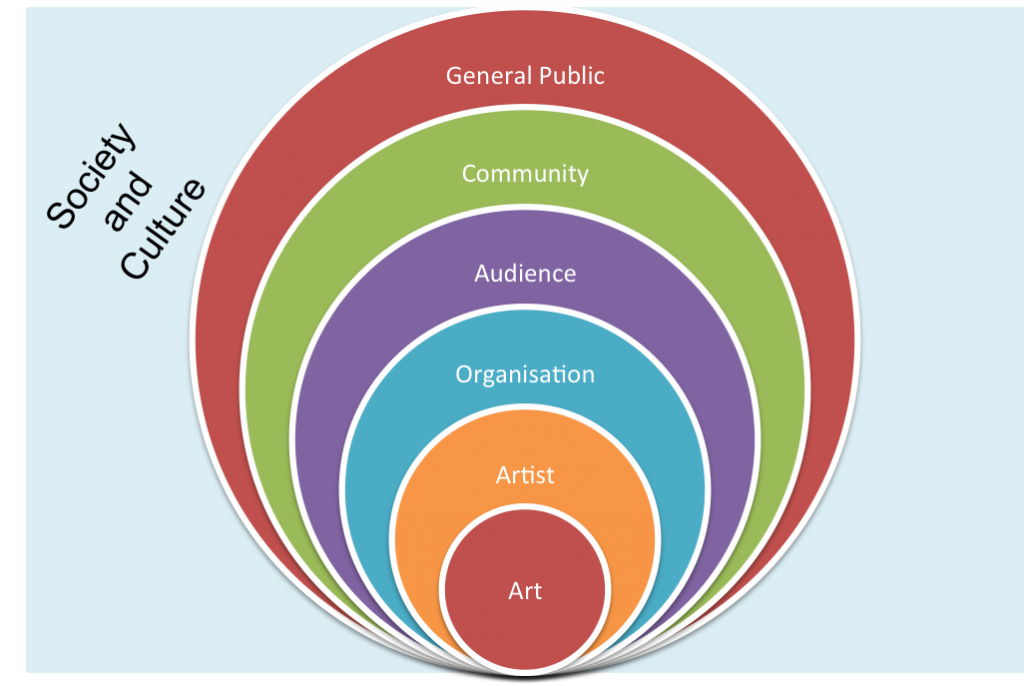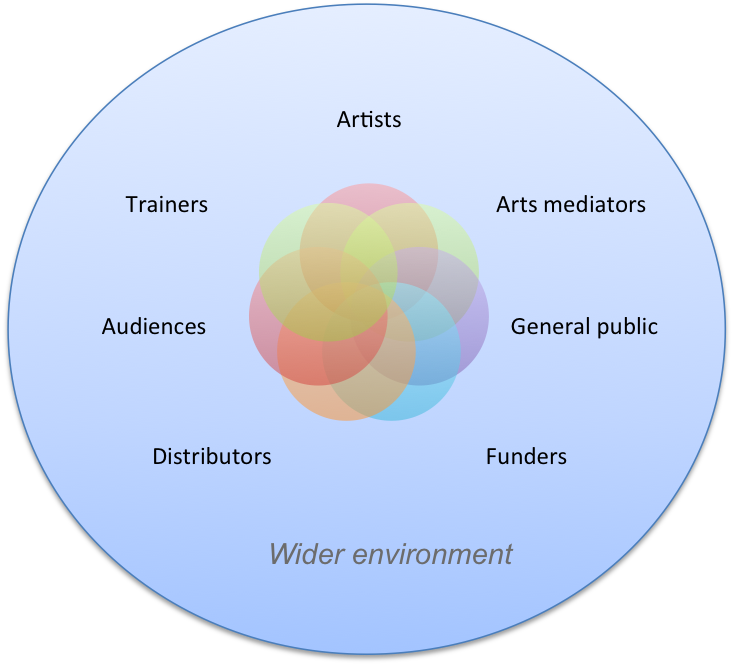Below is a slide deck for the Create NSW panel discussion webinar on Virtual Delivery - Does putting your work online pay?
BYP Group blog version: https://www.bypgroup.com/blog/2020/3/26/nerd-immunity-what-the-arts-community-can-learn-from-pioneering-digital-content-nerds-a-strategic-view
Screenhub version: https://www.screenhub.com.au/news-article/features/covid-19/yen-yang/nerd-immunity-can-geeks-save-the-arts-from-covid-19-260112
Aggregation Theory – A theory on the forces at play in the digital arena: https://stratechery.com/concept/aggregation-theory/
Aggregators are at different stages in different industries e.g. music/audio (Spotify vs iTunes), search (Google), online shopping (Amazon), accommodation (AirBnB), rides (Uber vs Lyft)
Go big – Generate a small amount of revenue from a large audience/customer base e.g. Facebook, YouTube
Go niche – Identify a niche in the market at which you are uniquely compelling (Unique Selling Point – USP).
The glut in digital content means non-digitizable and ‘experiential’ e.g. live performances, tangible goods becomes more valuable – but only to some i.e. ‘super fans’.
Nerd business models:
To cut through the noise they have gone niche and they are leveraging the Internet and aggregators to distribute their content and allow audiences to discover them.
Top of their niche: https://critrole.com/
Second in their niche, focusing upon podcasts: https://glasscannonpodcast.com/
A newcomer using more interactivity to drive monetisation: https://www.youtube.com/watch?v=SE88lTM2Dfs
Content differentiation and the subscription model: https://www.patreon.com/mathasgames
Nerd business models:
-Very niche: Nerds playing Dungeons & Dragons: https://critrole.com/
-Low production costs: Borrowed set, skeleton crew. Eventually get more elaborate sets, intro trailer, miniature figurines, etc.
-Leverage their online fanbase through … online donations: Critical Role would break the Kickstarter record for a film or TV series, raising US$11 million from around 88,889 donors.
-Monetise the ‘experiential’ (non-digitizable: During normal times they regularly sold out 4000-seat theatres with the cheapest tickets averaging over US$100. They also have a flourishing merchandise shop, affiliate marketing and sponsored ad-content that they either create for their sponsors or the sponsors have pre-made and slot into their show. This is in addition to any Google AdSense advertising revenue they get from ‘ad-roll’ insertions. Note that in addition to being professional voice actors, they all had considerable theatre and live performance training.
Deeper discussion at https://www.bypgroup.com/blog/uncategorized/the-david-versus-goliath-battle-faced-by-australian-creative-industries-and-what-they-might-do-to-win-part-3-new-media-business-models
Nerd business models:
Second in their niche, focusing upon podcasts: https://glasscannonpodcast.com/
They also do live shows (but they are presently smaller) and sell merchandise, but are also selling subscriptions to more content, similar to what their fans already know and love.
Nerd business models:
A newcomer using more interactivity to drive monetisation: https://www.youtube.com/watch?v=SE88lTM2Dfs
The candles in the background of the left image has candles that get lit when viewers donate money. Viewers can also influence the outcome of the game by providing their heroes with bonuses (a bit like in the Hunger Games), or they can bid against the heroes. Bidding wars often ensue between those in favour and those against. They also use more CGI and started off using elaborate models, props and figurines.
Nerd business models:
Content differentiation and the subscription model: https://www.patreon.com/mathasgames
Clearly there are low barriers to entry to playing games and sticking the videos online. To differentiate, some of these ‘Let’s Players’ provide a more labour-intensive role-playing style, that allows emergent storylines to evolve. Here, the YouTuber, Mathas Games is playing a game called Project Zomboid, in which he roleplays the experiences of his avatar surviving a zombie apocalypse. He successfully raised enough from a Patreon subscription campaign to fund his time and an editor’s time to make a couple of series of this.
The exception that proves the rule: The National Theatre https://onefurther.com/blog/visualised-3-national-theatre-at-home
National Theatre was built with pre-Internet assumptions.
Note: They have significant brand awareness as the premier contemporary English-language theatre company. So one question to ask yourself is: “What area am I the National Theatre in?”.
Note 2: They also achieved this at the peak of the pandemic and early on in the UK lockdown. The material – a light farce to cheer us in our darkest hour – may also have played a role in its relative success.
Note 3: One-off?: Subsequent performances not so strong: Twelfth Night had 839,320 views as at 30/4/20 having premiered on 24/4/20. Timeliness of the first event as the pandemic picked up in the national consciousness was probably critical.
The Orchestra of the Age of Enlightenment (OAE) show off their niche expertise in Baroque instruments.
Note, despite their relative success, they may need a leaner musicians’ roster to ensure costs are kept in line.
The British Museum have multiple items on their playlist. This item is from their ‘Curator’s Corner’ playlist, in which they demonstrate their specialist knowledge in how to make a Celtic torc. Note the potential for higher-value, boutique tours and classes with these curators.
Ben Thompson, the tech analyst that developed Aggregation Theory, is a firm believer in subscription models for digital content, so much so, he runs his own business along precisely these lines, going so far as to keep his content off aggregators of any form: https://stratechery.com/2020/dithering-and-the-open-web/
Thompson’s business model is to sell a technology newsletter subscription. People go to his website to subscribe (monthly or annually) and pay. He then emails them his newsletter. It’s extremely ‘scalable’ (can become very large easily) because the additional cost of sending out another copy of his newsletter is nearly zero.
Definition of a Subscription: https://stratechery.com/2017/the-local-news-business-model/


















